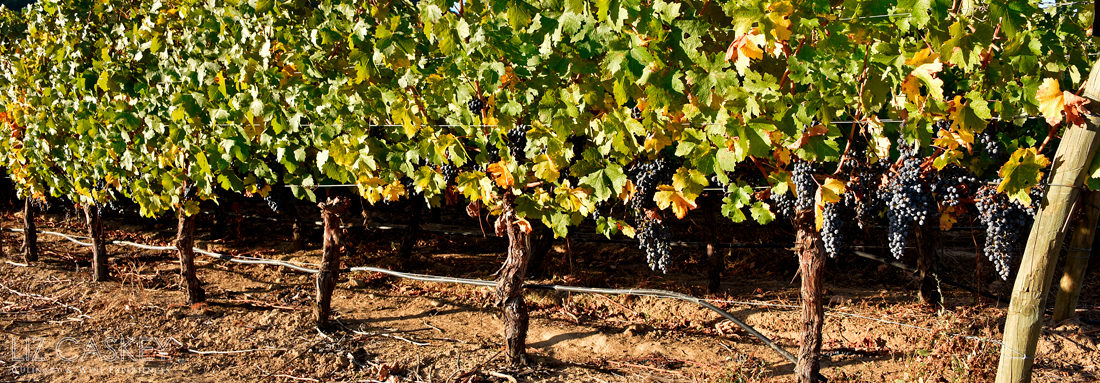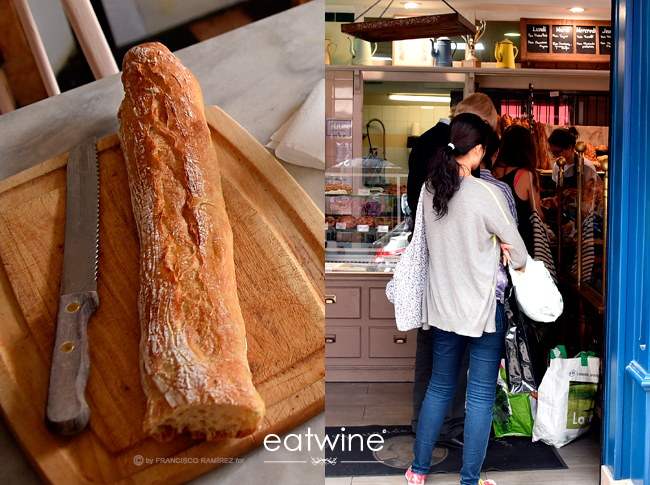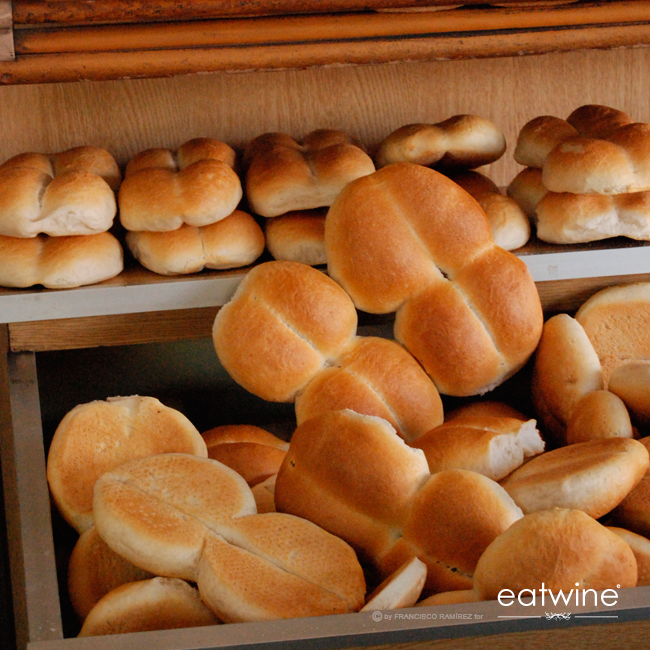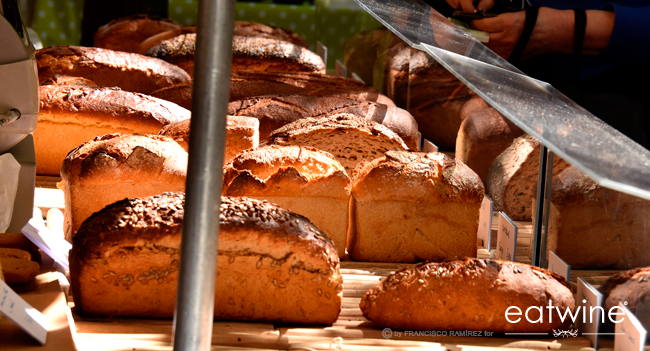La baguette. This slender loaf of bread symbolizes France and so much about its identity. The baguette defines the national identity, molding and giving it shape. During our time in France, nearly a month, we followed the hallowed daily ritual of la baguette. We savored it often still warm, just out of the oven, and ate it every single day. Every block had at least one bakery. Sometimes, there were three, maybe even four or five. All were small businesses. During “peak” times of the day, patrons would stand in lines waited quietly for their bread. One Saturday morning near our apartment in Batignolles, I was caught off guard when asked about the doneness of the baguette. Qu’est que c’est? She was asking if I preferred it pas trop cuite (not too cooked) or bien cuite (well done). Thinking in our one-year-old baby (and her lack of molars), I went with the first option.
In the mornings, I loved waking to the aroma of toasted baguette, slathered with a pat of salted butter from Normandy and a smear of apricot jam. Often while out, baguette would appear on the table at lunch. Some evenings, we decided that baguette with a cheese board and wine was a completely acceptable dinner option. Any baguette that passed the apartment door never lasted to the next day. And if it did, chances were that it was rock hard and only suitable to be crushed into crumbs.
The seemingly quotidian routine of going to the bakery always proved to be a pleasurable experience. Besides being able to practice my French, I loved inhaling the yeasty perfume and watching how they stacked their bread with such care. When I was lucky enough to time with baguette coming straight out of the oven, I would dote on its crusty, golden exterior and white, spongy, warm interior. Usually, I could not resist pulling off a piece, which was like biting into heaven. Nothing was more delicious in that moment–so elemental and totally handmade. Even Micaela, our baby daughter, couldn’t resist. She happily munched away in the stroller on a piece of bread (which we also discovered was a wonderful form of entertainment). With baguette, she learned how to properly chew and transitioned from purees to baby led weaning shortly after.
The baguette business in France is a serious one, so much that in 1993 they passed the law, Le Décret Pain, declaring that in order to be a baguette maison (homemade), only four ingredients could be used: flour, water, salt, and yeast. To be called a baguette tradition, no preservatives or frozen dough could be used. In a nutshell, this law sought to protect the integrity of French bread. It also recognized and protected the bakers and their small businesses who dedicate their lives to providing the French people with this primary food (a very honorable profession in France).
Landing back in Chile, I started to observe the bread culture here more closely. Certainly, Chile has its own bread tesoro (treasure), la marraqueta, which is actually called pan francés (French bread) in Valparaiso. Similar to France, it’s unthinkable that any Chilean household would be without marraqueta on the table at meal times. According to recent statistics, Chile is still one of the largest consumers of bread in the world. Chileans devour more than 90 kilos (198 pounds) of bread per capita, per year. To give you an idea of quantities, that is nearly an average of half a pound of bread every day for every Chilean (somewhere around 9 pieces of toast). This is over 35% more than the amount the French consume, which comes in at 58 kilos (128 pounds) per capita, per year.
While marraqueta certainly can be found everywhere, not all are made equal. I went on a mission to find a bakery in my barrio making them the traditional way. The few bakeries I encountered had marraquetas ready to bake (full of preservatives) or bought them already made. Many people just went to the supermarket instead. I extended my search to the downtown. Nada. Then I remembered my old bakery in Barrio Brasil that had closed, tragically, due to lack of clientele. As the owner had lamented at that time, many Chileans opt now to buy their marraqueta at the supermarket. It’s easier. Convenient. The kiss of death for any culinary tradition.
If this the reality of the state of bread in Chile today, are traditional bakeries in danger of extinction? Are Chileans opting for convenience over the value of artisan-made bread? I surmise that this, sadly, seems to be the case. And it perplexes me. Deeply. This is not just about the bread itself. It’s about what’s behind it; how it’s made and the larger cultural meaning. The tradition of making marraqueta risks being lost. It’s not only about going out to buy the bread and eating it to satisfy hunger. There is sacred ritual here of how Chileans supply themselves with this daily food. This is about the hands that make the bread. They bake it. They give it life. Sure, marraqueta is humble enough. But this folded bread, which does bare some resemblance with the French baguette, also defines Chileans. Think of all the breakfasts, lunches, onces (tea time) and sandwiches that come together with its perfectly golden, crunchy exterior yielding to that soft, chewy dough.
Bakeries bring neighborhoods together. They are patriarchs that see generations of neighbors grow up together. A baker becomes a friend and a trusted casero. To give a little contrast to the slow industrialization of marraqueta in Chile, in France, more than 70% of all bread is still made in small boulangeries—and the French actually prefer this. It’s not just about the convenience or a slightly better price. They value human relationships, the integrity of ingredients and the traditional way to make bread. They recognize that the baguette feeds their society, their culture, and their daily way of life.
So for those of us who live in Chile, what can we do to reclaim this bread tradition? Frankly, I think the power is in everybody’s hands. When it’s time to buy the daily marraqueta, every Chilean can choose. They decide where to buy, from whom, and how authentically their marraqueta is made. They can seek out the small baker in the neighborhood…or they can go to the big supermarket. The quality and experience are vastly different. What may seem to be a simple act of going to buy bread could be the destiny of this food that is so intrinsic to Chile.
Call me old school but I dream about seeing the marraqueta returning to be a totally artisanal product. I want us to support small bakeries and see them flourish until there’s one on every block. I hope that, someday, standing in line at those bakeries, I will overhear opinions of how Chileans prefer to eat their marraqueta. Perhaps a little more quemadita (golden) or tierna (tender). Maybe debate if it’s better with mashed palta (avocado) or a slab of mantequilla de campo (country butter). I yearn to see these bakeries become a cornerstone in every neighborhood and contribute to the quality of life there. Truly, bread brings us together. The marraqueta, however, will only continue to a culinary tesoro in Chile (as so chefs many like to tout it these days) if everyone stops to recognize, appreciate, and protect its tradition.















